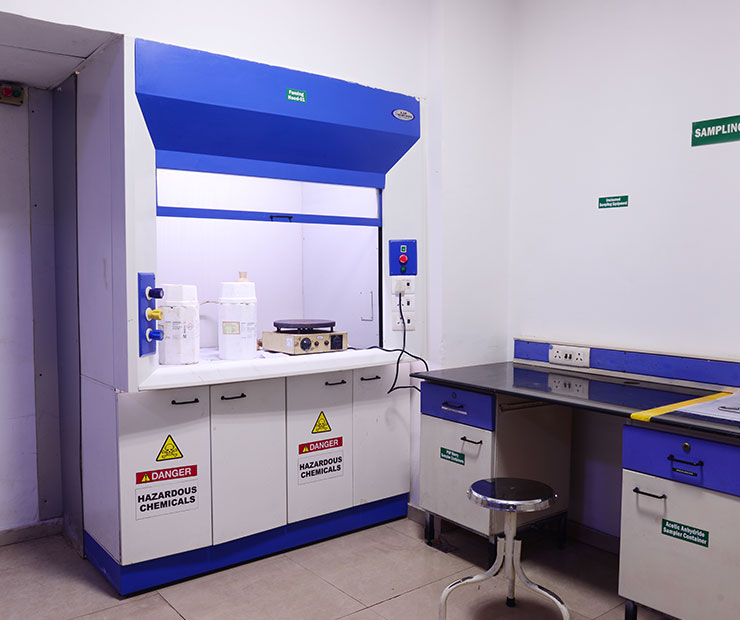Fume Hood
Fume hoods are a type of ventilation system used in many laboratories throughout the University. Their primary function is to exhaust chemical fumes, vapors, gases, dust, mists, and aerosols.
They also serve as physical barriers between reactions and the laboratory environment, offering a measure of protection against inhalation exposure, chemical spills, runaway reactions, and fires.
A typical fume hood has a box-like structure with a moveable sash window. Experimental procedures are performed within the hood which is consistently and safely ventilated, usually by means of an extract blower and ductwork.





